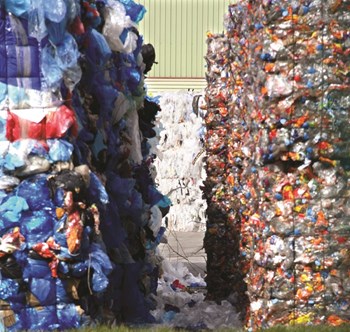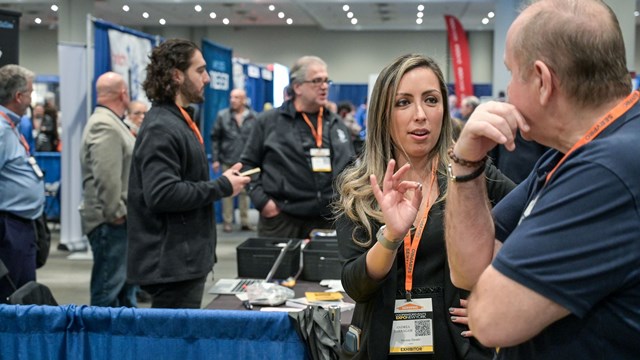
We as a culture produce a lot of trash—and not just in the form of reality television shows, late night infomercials, and bad romance novels. We put the debris from our meals, our projects, our newly acquired goods and wares, and just about everything else down the chute, in the can, or out on the sidewalk, and then we forget about it. But where does it go from there? Put another way: how does South Florida take out its trash?
If you were marooned on an island, and you needed a system for throwing away whatever trash you accumulated, you would probably wind up finding a hole, throwing the refuse in, and, if necessary, burying it. This is what Florida—and every other state, for that matter—did for hundreds of years: they found big holes in the ground and tossed trash in them.
“A long, long time ago, counties and cities had landfills,” says John Schert, the director of the Hinkley Center for Solid and Hazardous Waste Management—a statewide research center, funded by the Florida Department of Environmental Protection and hosted at the University of Florida—and the self-styled “chief garbologist” of the Sunshine State. As these smaller landfills approached maximum capacity, he explains, the process was consolidated. There are fewer—and larger—landfills than there once were.
The other issue is environmental. If your refuse is organic material like coffee grounds, banana peels and an old pair of ripped socks, you can fill up a hole in the ground with a free conscience. But when you start tossing in lead paint, crumbling asbestos tiles and toxic chemicals, you run into serious problems.
“There are environmental impacts for landfills if not properly operated, constructed, and maintained,” says Richard Tedder, of the Florida Department of Environmental Protection’s solid waste center.
Groundwater Contamination
“In the ‘60s and ‘70s,” Tedder says, after decades of neglect, “there was a groundwater contamination problem.” Years of rainfall on the landfill and was filtered through it—“like water in a coffee pot,” he says—and wound up in the aquifer, where it entered the potable water supply. “The Department went to work on liner requirements. We were fortunate to have experts to help us with the rules.”
Class 1 landfills—which is where household trash is taken—had a single-liner requirement in 1987. “In 1991, we upgraded that to composite lining and a dual-liner system.” The liners stop the “coffee filter” effect; water that does find its way into the landfill is treated.
Gas, another potential issue—much of the refuse decomposes as methane and CO2—is handled by a sophisticated system of gas lines.
“We feel good about our liner system,” Tedder says. “Ever since we’ve done this, we haven’t had any problems.”
In the ‘60s and ‘70s, as the groundwater became contaminated, there were something like 800 open dumps, Tedder says. As the industry became more regulated, maintenance costs increased, and many smaller facilities went out of business. Today, there are about 40 Class 1 landfills in Florida.
In South Florida, incidentally, because the land is so close to sea level, the landfills are not holes in the ground as much as controlled piles. “They’re high above ground,” Tedder says. “You can’t go down—you have to go up.”
As for the old sites, many have been repurposed. “People will build structures on top of them, or turn them into bike paths or hiking trails,” Tedder says.
A Complex Process
“Solid waste collection and disposal can be very complicated,” Schert says, perhaps understating its complexity, “especially in South Florida.”
Where there may have been municipal trash collection, over the years, the collection process was mostly privatized, he says, to save taxpayer money. Each county, or sometimes a community within the county, has a contract with a private collection service. These contracts can be complicated in their variety; Broward County, for example, has 20 municipalities and 20 different contracts.
Generally speaking, solid waste—that is, the refuse you throw in the trash—winds up in one of three places: a landfill; a MRF (pronounced “murph”), material recycling facility; or a waste energy plant.
“Florida has very extensive curbside collection for recyclables,” Schert says. This holds form as the recyclables are taken to the MRF for treatment. Those facilities are expert in cleaning, sorting, and processing glass, paper, aluminum, plastic, and much else.
“A water bottle might be recycled into a bottle for detergent,” Schert says. “It won’t come back as another water bottle.”
But the future lies in the third destination: the waste energy plant.
Florida has about a dozen waste energy plants. They are huge, Schert says, and cost quite a bit of money to build; the capital is raised through bond issues, as with ballparks and stadiums, and it can take a generation or two to recoup the initial investment.
Recovering Waste Energy
But they do recover the cost, and they are the wave of the future. A waste energy plant is, in layman’s terms, a fancy and extremely big incinerator. What happens is, waste is brought to the facility and deposited into pits, where it is compacted, and then moved by grappling hook into “fire boxes,” where it is burned. The massive heat makes steam, which activates turbines, which run generators, which produce electricity. Waste energy plants produce enough power to be self-sustaining, and they generally produce an excess of electricity, which flows to the grid.
“It’s high-quality electricity,” Schert says. “And these are very modern facilities that produce very little air pollution.”
There is, of course, some residue from all of this—huge piles of ash, that are hauled to landfills. But that, too, is a positive. “Ash takes up just ten percent of the space garbage would occupy,” Schert says.
The existing waste energy plants work quite well, but newer ones, which use so-called mass burn technology to increase incinerator capacity to 1,000 tons a day, are even more efficient.
And how does all of this impact a condominium? After all, once the garbage is put on the curb, there’s not much any of us can do, right?
Get on the Same Page
There are a few things. First, because condos tend to have communal collection and removal systems, it’s important that HOAs are on the same page. There are ways to recycle that are more effective than other ways.
For example, in order to properly process recyclables, they have to be clean of food matter, and they have to be properly sorted. Buildings that rely on chute systems for trash removal can make the chutes more efficient.
For example: Art Reetz is the sales manager for Nu-Recycling Technology, an Illinois-based company that distributes their products nationally. Nu-Recycling makes a specialized chute system that organizes recyclables and trash with the click of a button.
“It’s based on a single chute,” he says. “There are control panels on every floor. You press the right button, and the trash goes down and is sorted.” This is not only a “green” idea; it saves time and money for the building, because the time-intensive prospect of sorting trash is mechanized.
“Most recyclables do end up in the landfill,” Reetz says.
The Cutting Edge
The problem of garbage disposal is not going away. It has challenged the capabilities of human beings since day one, and it will continue to pose problems for our species and indeed the entire planet, as the world population soars, as natural resources are used up, and as the nature of what we’re throwing away changes. Those fancy lightbulbs? They will be a big environmental problem. Same with cell phones, printer cartridges, and the chemicals we keep inventing.
Fortunately, science is in the driver’s seat on this issue. Nu-Recycling, which has clients across the United States and around the world, is but one company on the vanguard. There are plenty more. There are also organizations like the pioneering Hinkley Center. The days of not thinking about the environmental impact of garbage are behind us as the environment is indeed on everyone’s mind these days.
“We’re all garbologists,” Schert says. “We’re all interested.”
Greg Olear is a freelance writer and a frequent contributor to The South Florida Cooperator.






3 Comments
Leave a Comment